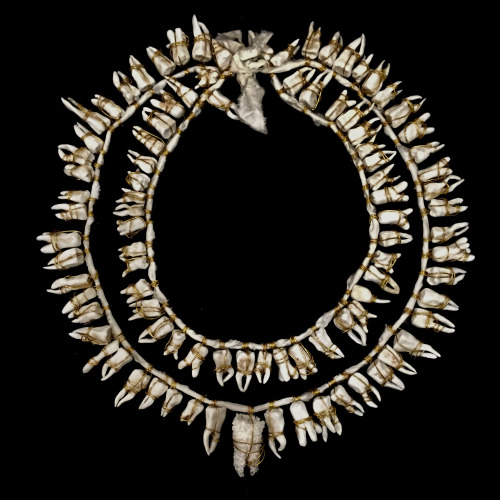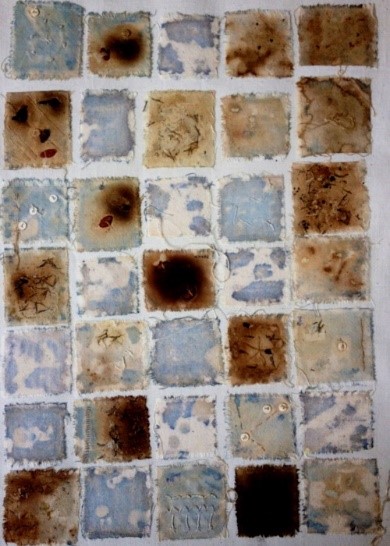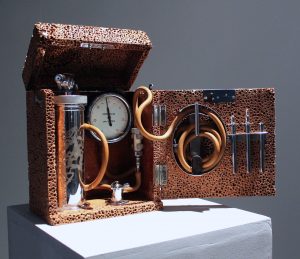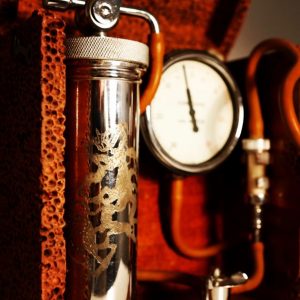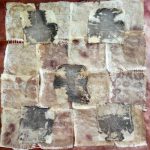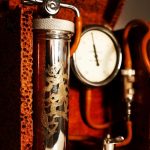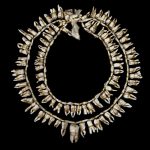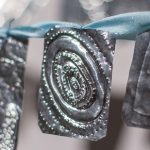
“Engineered Antibody” explores the field of synthetic biology and takes the form of a beaded necklace based on an antibody purified from the blood of an HIV-positive patient. Made up of 452 hand-made beads, it both represents and physically contains the actual 21 amino acids of the unnatural engineered antibody in their precise order and folded into the exact protein structure.
An antibody is a protein that is produced by the immune system in order to combat foreign bodies and viruses, which it can bind to. This antibody has been engineered to better block HIV infections through the introduction of an additional amino acid called sulfotyrosine.
The artist draws on the image that all forms of organic life are made of amino acids, which join together like strings of beads to form proteins that fold into three-dimensional structures essential to their function.
The beads are then attached to textiles that have been dyed using Coomassie Brilliant Blue, originally a wool dye and nowadays used as a stain in laboratories to visualize and separate proteins. The form of the embroidered calico is based on the diagram of the antibody structure.
Anna Dumitriu, in collaboration with Xiang Li, the Liu Lab for Synthetic Evolution at University of California Irvine
2016
Polymer clay, crystalized amino acids, Coomassie Blue dye, embroidered cotton calico, and antique crocheted linen
